SMART DIETS
LOWER STROKE RISK
THE LATEST ANTI-AGING SECRET
TEXTING WITH YOUR GRANDCHILDREN
ADVENTURE AFTER RETIREMENT
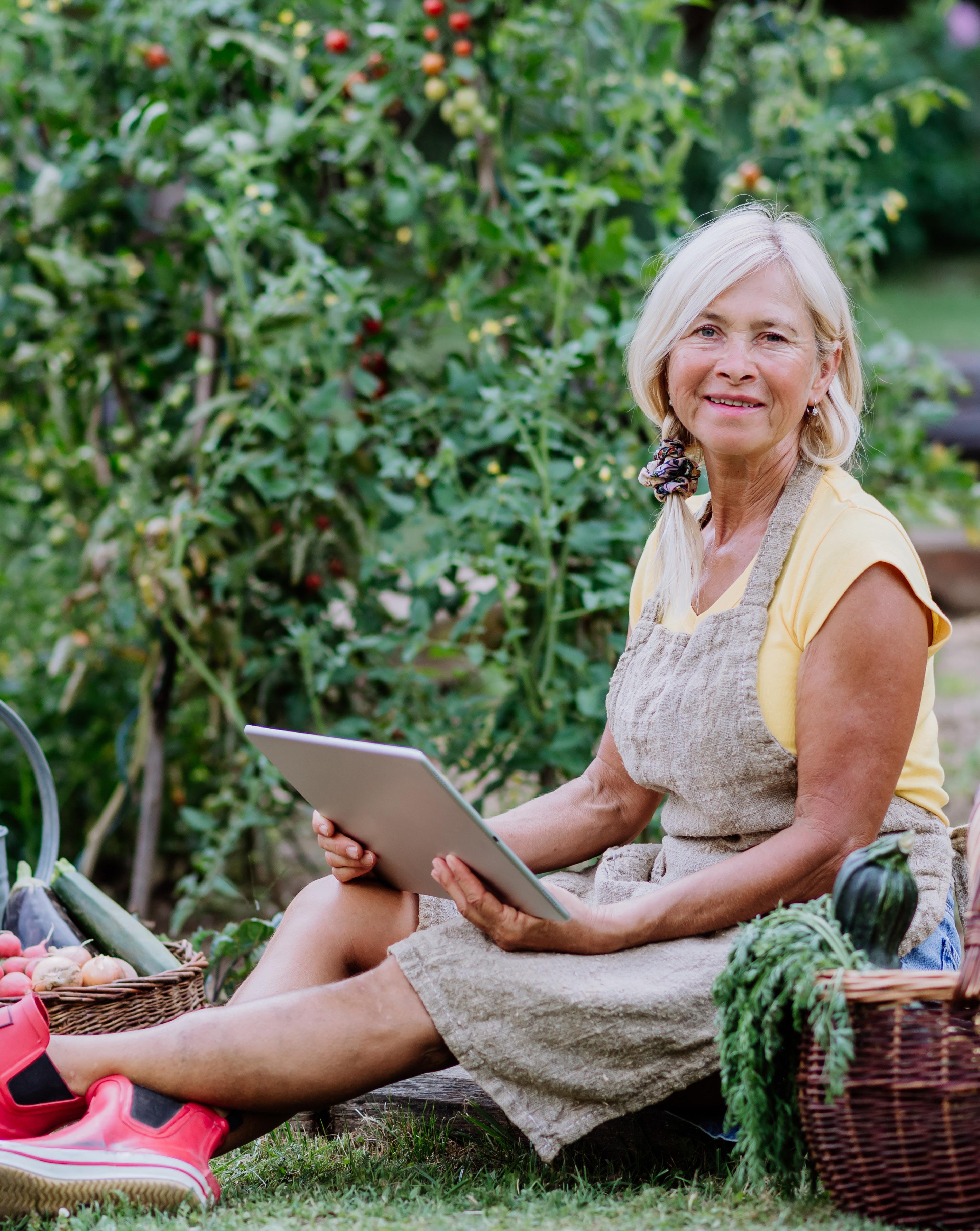

SMART DIETS
LOWER STROKE RISK
THE LATEST ANTI-AGING SECRET
TEXTING WITH YOUR GRANDCHILDREN
ADVENTURE AFTER RETIREMENT



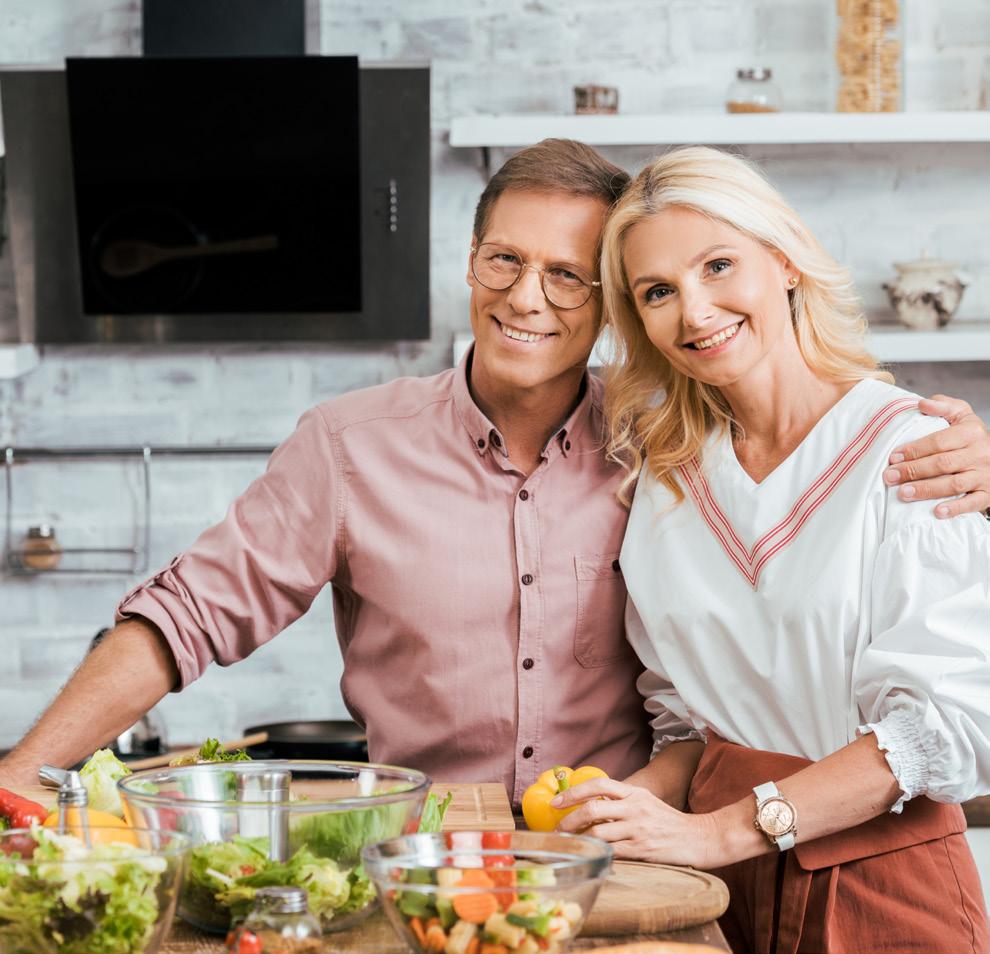
By Alyssa Ingram

f the shoe doesn’t fit, don’t wear it. That could be the best health advice you’ve ever heard. Healthy feet and ankles are essential to staying active, feeling good and enjoying everyday life.
But it’s not all about the shoe. • According to Podiatrist Kenneth Leavitt, DPM, wearing the right shoe is significant for healthy feet, but it is even more important to address aches and pains in the feet and ankles. “Foot pain is associated with diverse conditions and should not be ignored,” he says. “Pain that interferes with the ability to work or enjoy an active lifestyle may be treated or permanently corrected with or without surgery.”
Recognized for his advanced surgical techniques and comprehensive problem-solving, Dr. Leavitt emphasizes accurate diagnosis, patient compliance, and patience in the recovery process for optimum results. “A surgical option is rarely the only option,” he said, adding that comprehensive evaluation and discussion with each patient is essential before recommending a treatment plan.
“The first step in evaluation is an x-ray of both feet,” he explains. “Although a patient may experience pain in only one foot, a structure comparison helps in the diagnosis. Many congenital deformities or conditions are invisible, not causing a problem until later in life, for example. It is important to diagnosis or rule out such conditions as we investigate the source of pain.”
“Each patient is different, with a customized treatment plan whether he or she suffers bunion pain, arthritis, an injury, heel spurs, or other foot conditions,” Dr. Leavitt says. “But I do give each surgical patient the same advice. If you want to fix the problem, be prepared to spend a good amount of time in the healing process. It takes from six to 12 weeks for full recovery to avoid future problems and potential deformity.”
Dr. Lenneth Leavitt is the Chief of Podiatry, New England Baptist Hospital, and is also affiliated with Physicians of New England Baptist Hospital at Cape Cod, Massacusetts.
publisher (your logo here)
managing editor
Suzanne Fox
copy editor Christian Dischler
contributing writers
Alyssa Ingram
Grant Parker
Nellie Palmer
Ellie Gardner
Ethan Boyd art design and production
Suzanne Fox
The information contained in Active Seniors is intended for educational purposes only. A reader should never substitute information contained in Active Seniors for the advice of a health care professional. Jumpstart Publishing, LLC and publishers of Active Seniors, do not endorse or promote any of the products or services described in the pages of Active Seniors and the publishers do not verify the accuracy of any claims made in the editorial or advertisements contained in Active Seniors. Readers should not use the information in Active Seniors for diagnosis or treatment of any health problem or for prescription of any medication or other treatment. Readers should consult with a healthcare professional before starting any diet, exercise or supplementation program, before taking any medication, or have or suspect they have a health problem.
© 2025 Fox Printing & Creative Publishing, LLC, New Orleans, LA All rights reserved Printed in the USA by Fox Print Services (igofox.com)




By Grant Parker

Read this if you have never had a stroke. Follow these guidelines and you may never have one. The American Heart Association (AHA) and American Stroke Association (ASA) confirm that diets high in vegetables, whole grains, fruit and nuts are significant factors in lowering the risk of a first-time stroke.
Recently updated guidelines published in AHA’s journal, Stroke, indicated that eating Mediterranean or DASH (Dietary Approaches to Stop Hypertension)-style diets, regularly engaging in physical activity and keeping your blood pressure under control can lower your risk of a firsttime stroke.
“We have a huge opportunity to improve how we prevent new strokes, because risk factors that can be changed or controlled —
especially high blood pressure — account for 90 percent of strokes,” said James Meschia, M.D., lead author of the study and professor and chairman of neurology at the Mayo Clinic in Jacksonville, Florida.
• Eat a Mediterranean or DASH-style diet, supplemented with nuts.
• Monitor high blood pressure at home with a cuff device.
• Keep pre-hypertension from becoming high blood pressure by making lifestyle changes such as getting more physical activity, eating a healthy diet and managing your weight.
• Reduce the amount of sodium in your diet; sodium is found mostly in salt.
• Visit your healthcare provider annually for blood pressure evaluation.
• If your medication to lower blood pressure doesn’t work or
has bad side effects, talk to your healthcare provider about finding a combination of drugs that work for you.
Mediterranean-style or DASH-style diets are similar in their emphasis on fruits, vegetables, whole grains, legumes, nuts, seeds, poultry and fish. Both are limited in red meat and foods containing saturated fats, which are mostly found in animal-based products such as meat, butter, cheese and full-fat dairy.
Mediterranean-style diets are generally low in dairy products and DASH-style diets emphasize low-fat dairy products.
Smoking and taking oral birth control pills can significantly increase your stroke risk. If you’re a woman who experiences migraines with aura, smoking raises your risk of stroke even more than in the general population.
Mediterranean Diet Recipe
Recommended by the Mayo Clinic Staff
Ingredients
• 8 ounces farfalle (bow tie) pasta
• 2 tablespoons olive oil
• 4 garlic cloves, crushed
• 1/2 can (19 ounces) garbanzos, rinsed and drained
• 1/2 cup unsalted chicken broth
• 1/2 cup sliced button mushrooms
• 4 cups fresh spinach, chopped
• 2 tablespoons Parmesan cheese
• Cracked black peppercorns, to taste
Directions
1. Fill a large pot 3/4 full with water and bring to a boil.
2. Add the pasta and cook until al dente (tender), 10 to 12 minutes, or according to the package directions. Drain the pasta thoroughly.
3.In a large skillet, heat the olive oil and garlic over medium heat. Add the garbanzos and chicken broth. Stir until warmed through. Add the raisins and spinach. Heat just until spinach is wilted, about 3 minutes. Don't overcook.
4. Divide the pasta among the plates. Top each serving with 1/6 of the sauce, 1 teaspoon Parmesan cheese and peppercorns to taste. Serve immediately.
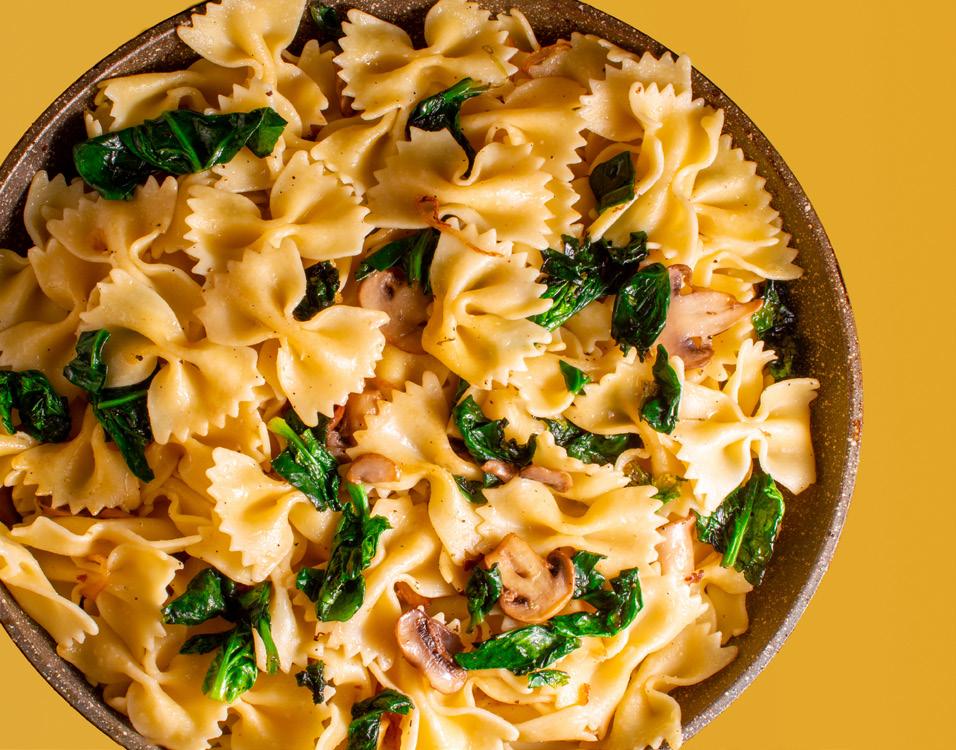

By Ellie Gardner
Diabetes kills more Americans each year than breast cancer and AIDS combined.
An estimated 20 million adults and children in the United States have diabetes.
More than one-third of those with diabetes have not yet been diagnosed.
Two out of three people with diabetes die from heart disease or stroke.

Those are the facts, says the American Diabetes Association, in its on-going awareness, educational and research campaigns. While research and technology are making it easier to treat diabetes, the disease remains a prevalent major healthcare concern. Seniors are not immune to the condition; it can occur at any age, with serious complication if not diagnosed and treated properly.
The answer is not a “yes” or “no.”
Type 1 diabetes is caused by genetics and unknown factors that trigger the onset of the disease; type 2 diabetes is caused by genetics and lifestyle factors.
Being overweight does increase your risk for developing type 2 diabetes, and a diet high in calories from any

source contributes to weight gain. Research has shown that drinking sugary drinks is linked to type 2 diabetes.
The American Diabetes Association recommends that people should avoid intake of sugarsweetened beverages, including non-diet soda, sweet tea and energy drinks, to help prevent diabetes. Such drinks raise blood glucose levels and can provide several hundred calories in just one serving.
A healthy meal plan for diabetics is generally the same as a healthy diet for anyone – low in saturated and trans fat, moderate in salt and sugar, with meals based on lean protein, non-starchy vegetables, whole grains, healthy fats and fruit. Diabetic and "dietetic" foods generally offer no special benefit. Most of them still raise blood glucose levels, are usually more expensive and can also have a laxative effect if they contain sugar alcohols.
Starchy foods can be part of a healthy meal plan, but portion size
is key. Whole grain breads, cereals, pasta, rice and starchy vegetables like potatoes, yams, peas and corn can be included in your meals and snacks. In addition to these starchy foods, fruits, beans, milk, yogurt, and sweets are also sources of carbohydrate that you need to count in your meal plan.
A place to start is about 45-60 grams of carbohydrate per meal. However, you may need more or less
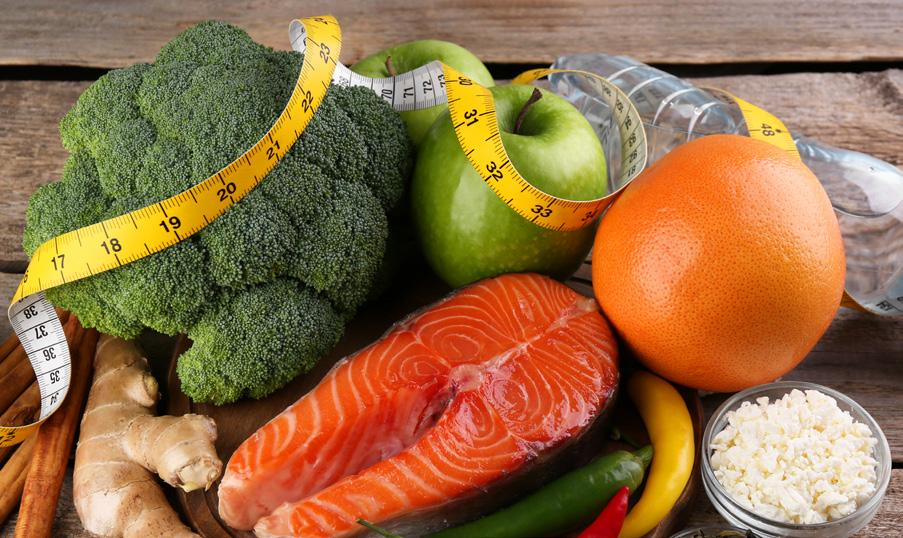
carbohydrate at meals depending on how you manage your diabetes. You and your health care team can figure out the right amount for you. Once you know how many carbs to eat at a meal, choose your food and the portion size to match. For more information on diabetes visit the American Diabetes Association at www.diabetes.org.
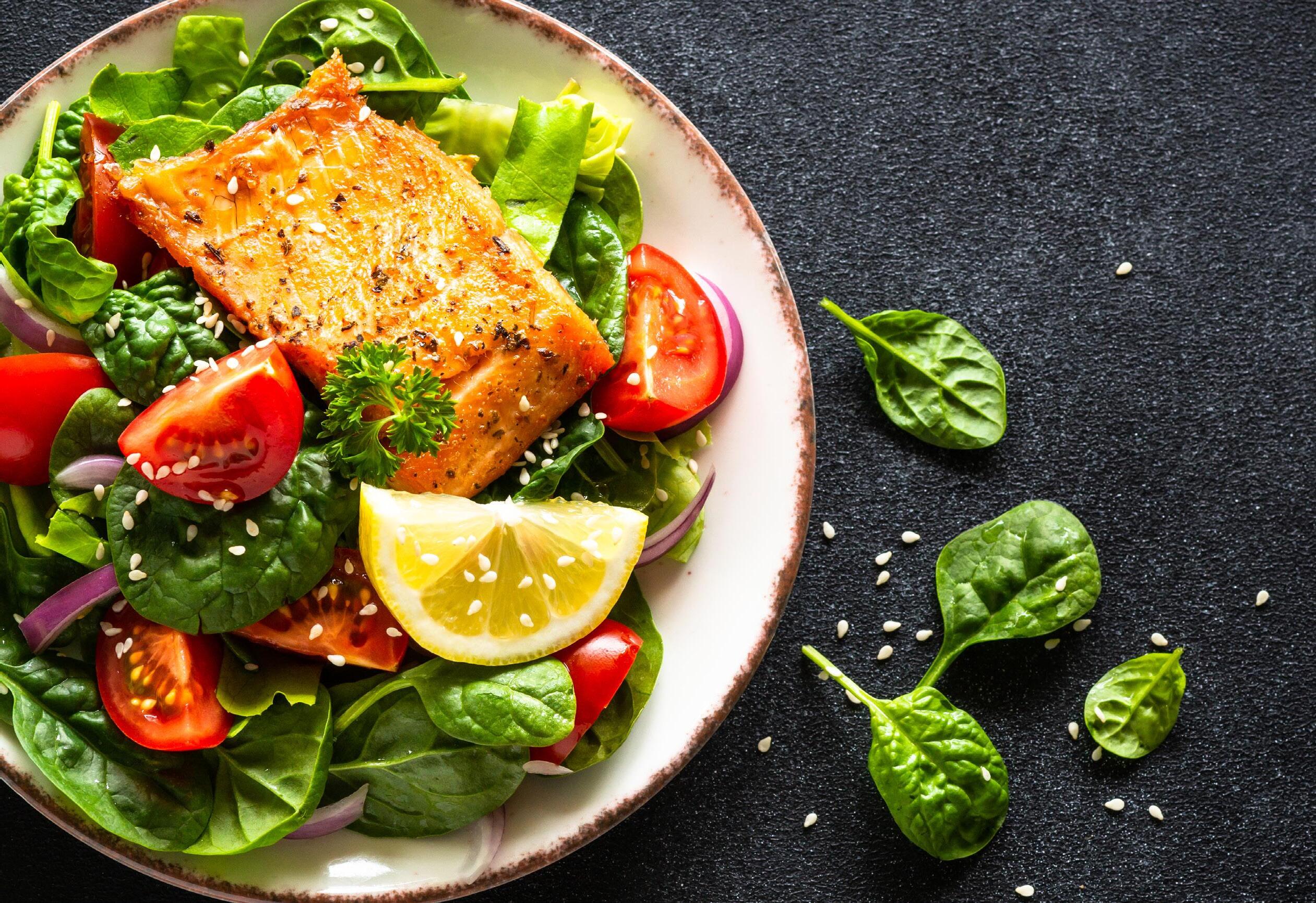
BRAIN-HEALTHY RECIPE FOR STROKE-CONSCIOUS SENIORS
Why It’s Good for You:
This nourishing bowl is rich in omega-3 fatty acids, leafy greens, and potassium—nutrients that support brain health, reduce inflammation, and promote healthy blood vessels.
• 2 (4 oz) fillets of salmon, grilled or baked
• 2 cups fresh baby spinach
• 1 cup cooked quinoa
• ½ tomato, sliced
• 2 tablespoons olive oil + juice of ½ lemon (for dressing)
By Nellie Palmer
Cook the quinoa according to package instructions and set aside.
Season the salmon with a pinch of salt, pepper, and a drizzle of olive oil. Grill or bake at 375°F for 12–15 minutes, or until cooked through.
Assemble the bowl: Layer spinach on the bottom, then top with quinoa, salmon, and tomato slices.
Drizzle with olive oil and lemon juice dressing.
Serve warm or chilled—perfect for lunch or a light dinner.
Tip: Add a sprinkle of chopped walnuts or fresh herbs like dill for extra brain-boosting benefits.

By Ellie Gardner
CAN YOU READ THIS?
FYI, RSVP, ASAP, AND BYOB?
NO PROBLEM, RIGHT?
(FOR YOUR INFORMATION, PLEASE RESPOND AS SOON AS POSSIBLE, AND BRING YOUR OWN BEVERAGE.)
BUT HOW ABOUT THIS ONE: IBRB, 4COL B4N?
DON’T WORRY—IT’S NOT A SECRET CODE, IT’S JUST THE FAST-MOVING LANGUAGE OF TEXTING:
(I’LL BE RIGHT BACK, FOR CRYING OUT LOUD, BYE FOR NOW.)

Welcome to the world of emojis, acronyms, and shortcuts—where fewer letters say more. If you’re already comfortable with FaceTime, texting, and maybe even sending the occasional meme, you’re ready to take your communication to the next level: speaking your grandkids’ language.
Whether they’re 8 or 18, your grandchildren are likely glued to their phones. Texting them in a way they understand helps keep the bond strong, especially if you're miles apart. Plus, learning their lingo shows you’re not just


keeping up—you’re in the loop.
Essential Texting Acronyms to Know
Here’s a fun, friendly list to help you keep up—and maybe even impress them a little:
• GTG – Got to go
• BRB – Be right back
• OMW – On my way
• IDC – I don’t care (use cautiously!)
• LOL – Laughing out loud
• TBH – To be honest
• TTYL – Talk to you later
• SMH – Shaking my head
• ICYMI – In case you missed it
• RN – Right now
• ILY – I love you
Some of these shortcuts aren't words at all—they’re made from punctuation marks and letters. They add expression and emotion to texts, even without emojis.
• :) or �� – Happy
• :( or �� – Sad
• :D or ��– Big smile
• ;) or ��– Wink
• <3 or ��– Heart
• :P ��
– Playful / sticking out tongue
• RME ��– Rolling my eyes (a

favorite among teens)
Newer Acronyms Your Grandkids Might Use
• FR – For real
• GOAT – Greatest of all time (you might be their GOAT!)
• FOMO – Fear of missing out
• BTW – By the way
• OOTD – Outfit of the day
• LMAO – Laughing my a** off (use with caution!)
• BFFR – Be for real (like "seriously?")
• NM – Not much (as in “What’s up?” “NM, u?”)
• IDK – I don’t know
• TMI – Too much information
a Pro
1. Don’t overthink it. A simple “Hi, how’s your day?” goes a long way.
2. Use emojis. They’re universal and fun. ������
3. Ask them to teach you! Grandkids love turning the tables and being the teacher.
4. Keep messages short. One or two sentences is perfect for a quick check-in.
5. Use speech-to-text. If typing is tricky, just speak your message and let your phone do the work.


By Grant Parker
Imagine transforming a weedy, empty lot into a vibrant hub where neighbors share tomatoes, stories, and sunshine. A community garden is a beautiful way to grow food and friendships—especially for active seniors looking for fresh air, light exercise, and connection.
1. Find a Suitable Lot
• Look for unused spaces: vacant lots, church lawns, school grounds, or underutilized city property.
• Tip: Choose a location with full sun (6–8 hours/day), access to water, and good drainage.
2. Talk to the Landowner
• Approach the property owner with a friendly proposal.
• Offer to maintain and beautify the land in exchange for using it at no cost.
• Many owners will allow usage through a simple
land use agreement or MOU (memorandum of understanding).
• Bonus: Some cities offer land banks or public land for community use—check with local officials.
3. Build a Team
• Form a small committee: seniors, local families, gardeners, volunteers.
• Assign roles: coordinator, treasurer, outreach leader, maintenance.
4. Plan the Garden
• Decide what to grow— vegetables, herbs, flowers?
• Consider accessibility: raised beds for seniors, wide pathways, benches.
• Layout should include composting, rainwater collection (if possible), and tool storage.
5. Fundraise & Gather Supplies
• Start small: seek in-kind
donations (seeds, tools, soil) from local hardware stores or nurseries.
• Consider: �� Local grants
�� Civic organizations (Rotary, Lions Club)
�� Church groups or garden clubs
6. Build the Garden Together
• Host a community build day— make it a fun, social event!
• Include music, light refreshments, and jobs for all mobility levels.
7. Create Guidelines
• Outline how plots are shared or assigned
• Set rules for maintenance, watering schedules, harvest sharing
• Encourage workshops and potluck events for social bonding
8. Celebrate the First Harvest
• Host a “garden party” with fresh produce dishes.
• Invite the landowner and community leaders to see the results.
• Light physical activity boosts circulation and flexibility
• Gardening reduces stress and enhances mood
• Sharing produce reduces food costs
• Builds intergenerational friendships.
✅ Identify a sunny, safe lot with water access
✅ Talk to the landowner about using the space for free
✅ Sign a simple land use agreement or MOU Build Your Team
✅ Recruit neighbors, seniors, and volunteers
✅ Assign roles: organizer, maintenance, outreach Garden Planning
✅ Decide what to grow (veggies, herbs, flowers)
✅ Design layout: raised beds, wide paths, benches
✅ Plan water system and compost area Resources & Fundraising
✅ Ask local businesses for donations (tools, soil, seeds)
✅ Apply for local grants or ask civic groups to sponsor
✅ Set a small member fee if needed for upkeep Garden Build Day
✅ Choose a date and invite volunteers
✅ Bring refreshments and music
✅
Offer tasks for all abilities
Ongoing Management
✅
Create a simple rule sheet and watering schedule
✅ Assign bed spaces or shared harvest model
Host monthly meetups or potlucks in the garden
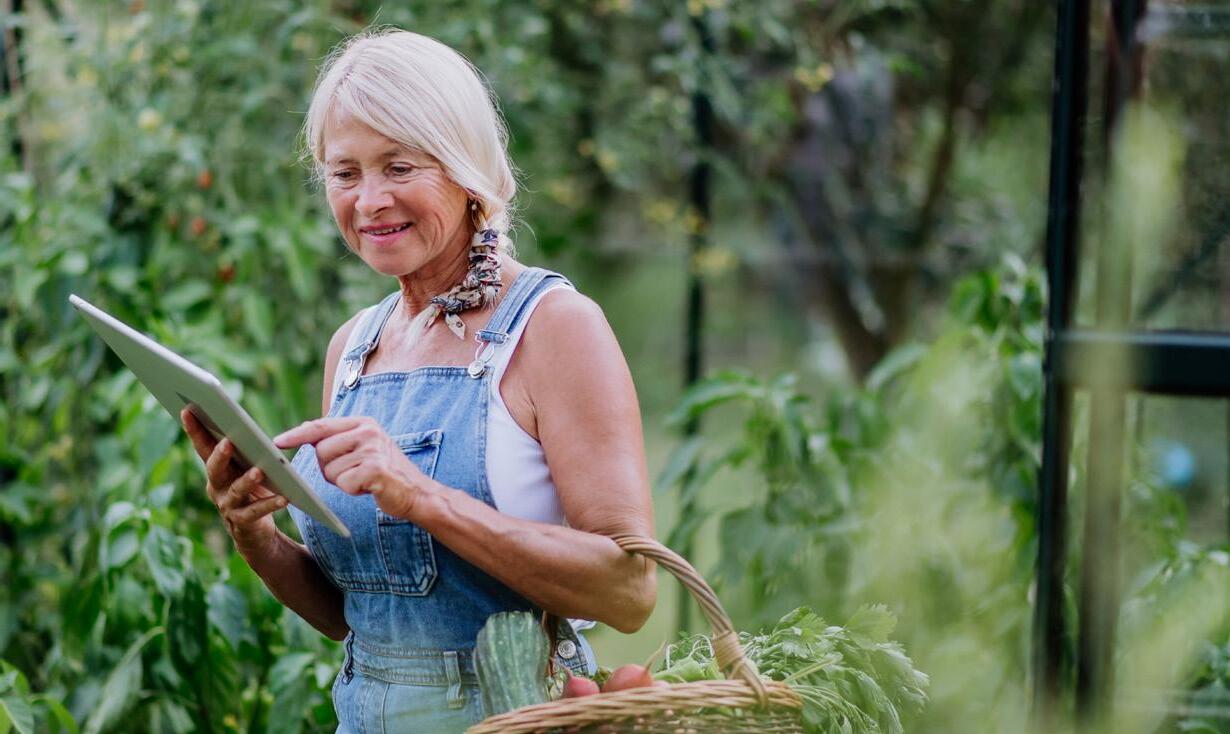

“ANYONE WHO STOPS LEARNING IS OLD, WHETHER AT TWENTY OR EIGHTY. ANYONE WHO KEEPS LEARNING STAYS YOUNG. THE GREATEST THING IN LIFE IS TO KEEP YOUR MIND YOUNG.”—HENRY FORD
It is normal to become forgetful from time to time, especially as you get older. Who hasn’t forgotten where the keys or glasses are? We laugh about these “senior moments,” but the natural mental decline that occurs when you age can be worrisome.
One of the best ways to keep your mind young is to learn something new. When you try
a new skill the connections between the parts of your brain are strengthened, and re-wired to be more active. The more you use your brain, the better it performs and the more difficult the activity, the greater the memory improvement. Remember, passive activities, such as watching television, do nothing to keep your mind sharp and may cause you to become more forgetful.
Learn a musical instrument. A recent TED (Technology, Entertainment, Design) presentation by Educator Anita Collins explained that when you listen to music, multiple areas of your brain become engaged and active. When you play an instrument, that activity becomes a full-body brain workout. Research has shown that playing a musical instrument stimulates your brain, increases
By Ethan Boyd
your memory and makes you a happier person. Master new technology. If an activity is out of your comfort zone and challenging, it will exercise your brain. Mastering a video game, for example, helps to train critical thinking skills. A Mayo Clinic study found that regular computer use reduced the risk of mild cognitive impairment by 53 percent.
2
Learn a language. Learning a new language enlarges your hippocampus, which can deteriorate as you age. This helps with long-term memory. The Brain and Language Journal pointed out that switching between languages may give your brain a workout because it is constantly having to choose between words and meanings. Research in The Annals of Neurology shows that learning a second language as an adult can
slow brain decline. Take it a step further and listen to music or read a book in your new language – double the fun!
3
Learn how to dance. A study published in the New England Journal of Medicine shows that 76 percent of senior citizens who learned to dance had a reduced risk of dementia. Dancing can also boost your brain power and improve your memory skills. Your body gets a great workout too!
class, learn to knit or crochet, or join a photography club. Become fully immersed in the process to boost your memory and cognitive function.
4 5
Start a complex hobby or craft. A new skill keeps your brain active. Researchers at the Mayo Clinic found that learning a new creative hobby helped reduce the risk of dementia and preserve memory. Learn to play chess, take a master gardening
Read. Treating your brain to the mental stimulation of reading strengthens and creates new brain pathways while improving short-term memory recall. For a change of pace, try reading books from a different genre than you usually do for an extra brain workout.
Additional benefits to learning something new include increasing your confidence, opening your life to new people and experiences, decreasing stress, getting you out of a rut, and, don’t forget, it can be just plain fun to learn!

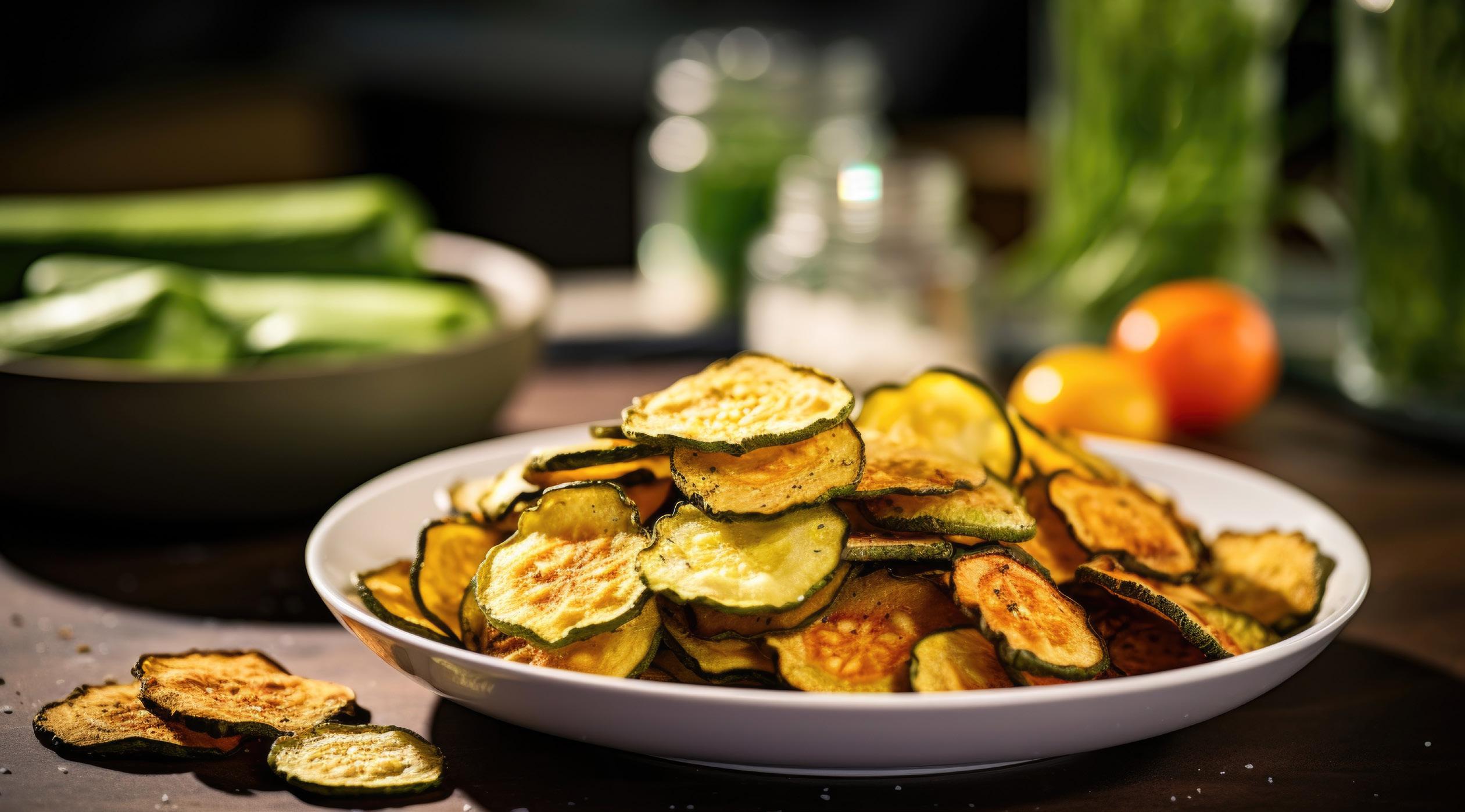
Aguilt-free, crunchy snack that’s easy to make and fun to share!
Why It’s Great for Game Night (and Seniors)
• Low in carbs and calories
• Naturally hydrating and fiber-rich
• Baked—not fried
• Great for heart and blood sugar health
Ingredients (Serves 4–6):
• 2 medium zucchini, thinly sliced into rounds
• 1 tablespoon olive oil
• ¼ teaspoon garlic powder
• ¼ teaspoon paprika or Italian seasoning
• Optional: pinch of salt or salt substitute
• Optional: grated Parmesan for extra

Directions:
1. Preheat the Oven.
Set your oven to 225°F (low and slow = crispier chips!). Line two baking sheets with parchment paper.
2. Slice the Zucchini
Use a mandoline or sharp knife to slice zucchini into thin, even rounds—about 1/8 inch thick.
3. Toss with Seasoning
In a bowl, toss the slices with olive oil, garlic powder, paprika, and a light sprinkle of salt or Parmesan, if using.
4. Arrange and Bake
Lay zucchini rounds in a single layer on the baking sheets. Be sure they don’t overlap.
5. Bake Until Crisp
Bake for 1.5 to 2 hours, flipping halfway through. Chips are done when edges are browned and centers are crisp.
6. Cool & Serve
Let chips cool on a wire rack to finish crisping. Serve in a bowl for easy snacking during card games or dominoes!
Extra Tip:
Pair with a small bowl of Greek yogurt dip or hummus for added protein and flavor.
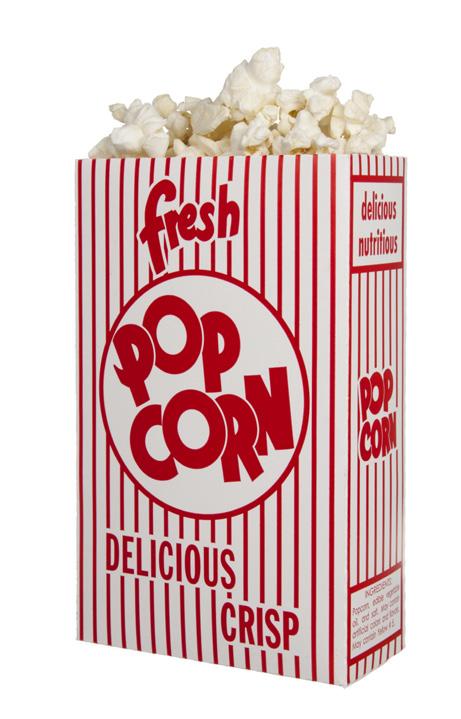
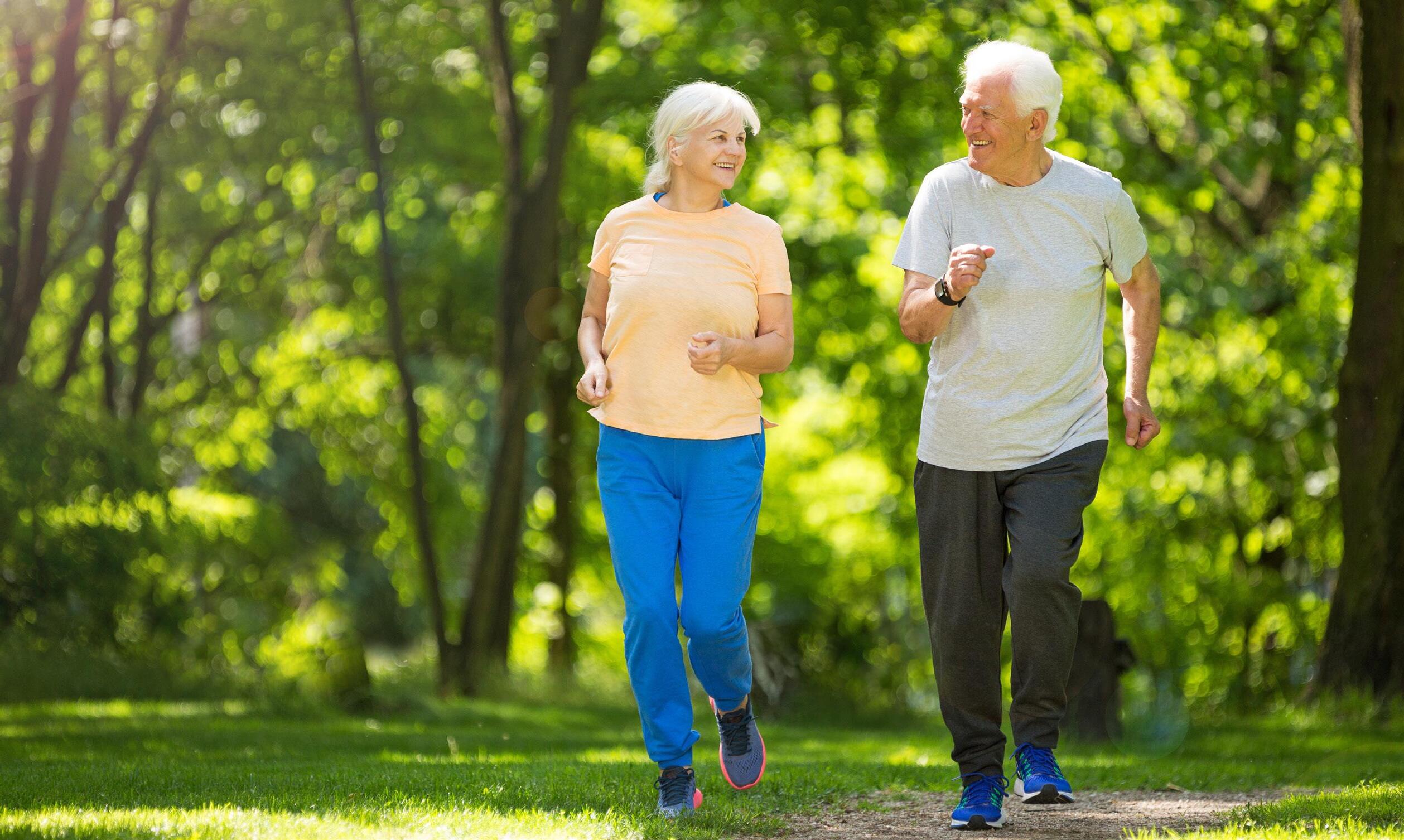
IT MAY BE FUNNY BUT IT’S ALSO A FACT. FLATULENCE IS PART OF DAILY LIFE. AND NOW A VIDEO MAKING THE ROUNDS ON TIKTOK IS DRAWING ATTENTION TO THE IMPORTANCE OF HOW HEALTHY AN AFTER DINNER WALK CAN BE FOR RELEASING GAS AND AIDING IN DIGESTION WITH EACH STEP.
In the post that's been loved more than a million times, Canadian cookbook author Mairlyn Smith mixed humor with health, saying in her post, “Going for a fart walk after dinner is something that’s going to help you age wonderfully.” Smith shares that she and her husband pass the time while passing gas on a walk for about an hour each night.MAI
She explains online, “About 60
minutes after we’ve eaten, we put on our running shoes and off we go. Now why do we do this? Well, we eat a lot of fiber, so we have gas. Everybody does! And yeah, you fart when you walk!”
And you don’t need to break speed records to break wind on your walk. Experts say a moderate pace will do the trick.
As Dr. Rosario Ligresti, chief of Gastroenterology at Hackensack University Medical Center (HUMC) states, such walks after a meal not only helps with the digestion process by promoting movement of our intestines, but can potentially help ward off serious disease over time.
“A post-dinner walk can offer several benefits beyond gas release,” says Dr. Ligresti. “Walking encourages the
muscles in your digestive tract to contract, helping move food along and preventing constipation. Physical activity after a meal also helps your muscles absorb glucose from the bloodstream, which can prevent blood sugar spikes, especially beneficial for people with diabetes or pre-diabetes.”
Additional benefits may include strengthening bones and muscles, promoting better sleep, reducing stress, lowering blood pressure, and even improving cognitive function.
This is a fun and interesting Friday night and weekend topic that will have your readers and viewers talking – and then walking!
By Suzanne Fox
As travel trends shift post-retirement, more seniors are hitting the road— not for rigid tours or cookie-cutter hotel stays—but for something more personal, flexible, and fulfilling: shortterm vacation rentals. Whether it's a cozy casita, a beachside bungalow, or a downtown loft, these fully equipped homes are offering active seniors exactly what they want in a getaway.
For many seniors, pets are part of the family—and leaving them behind just isn’t an option. While most hotels either don’t allow pets or impose steep fees and restrictions, many short-term rentals open the door (literally) to your four-legged companions.
Beyond just allowing pets, rentals offer fenced yards, nearby parks, and space to roam—creating a vacation that feels more like home for both you and your furry friend.
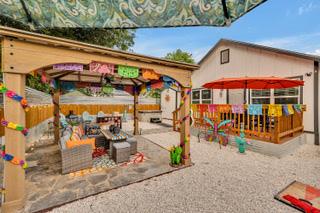

Another major perk? The kitchen. Seniors who love to cook—or have specific dietary needs—can enjoy the freedom to prepare meals just the way they like them. Short-term rentals typically include full kitchens, private dining areas, and outdoor spaces perfect for grilling or gathering. For travelers who don’t want every meal to come with a check and a tip, it’s a budget-friendly and comforting alternative to
Hotels often mean small rooms, hallway noise, and zero personality. Rentals offer something very different: privacy, character, and space to stretch out. For couples, multi-generational families, or friend groups, short-term rentals can be a more affordable and peaceful choice— especially when you split the cost.
Located in San Antonio’s lively Southtown district, The Coco House is a delightful,


two-bedroom, two-bath vacation home designed with charm, color, and cultural warmth.
Inspired by the Magic of Family & Celebration
Influenced by Disney’s Coco, the home is a vibrant tribute to Día de los Muertos, the Mexican holiday that celebrates the lives of loved ones lost. From colorful decor to its cheerful vibe, The Coco House offers a heartfelt, joyful atmosphere that invites guests to make lasting memories.
• Sleeps: Up to 6 guests
• Pet Policy: Pets of any size welcome with a $50 deposit
• Price Range: $250–$300/night
• Bonus: Includes a private Coco golf cart—perfect for local exploring Relax and Unwind in Style
Step into a serene backyard oasis featuring:
• A pergola with TV, ceiling fan, and fire pit
• Hot tub under the stars
• Zero-shaped patio with flat stone and small rock landscaping
• Completely private and perfect for morning coffee or evening wine
EXPLORE SAN ANTONIO
With your six-seater golf cart (included in your stay!), you can cruise around San Antonio anywhere the speed limit is 35 mph or less—making it a breeze to access the best of the city:
• Roosevelt Park – Just 4 minutes away. Perfect for a pet walk or morning stroll under mature trees. It’s flat, accessible, and scenic.
• HEB Grocery Store – Only 6 minutes. (1.4 miles) Pick up ingredients for a home-cooked meal, or grab a few snacks before hitting the River Walk.
• Concentra Urgent Care – 9 minutes (3 miles)
••Travel with peace of mind knowing care is close by, just in case.
• River Walk – Just a short golf cart ride away. Easily navigate this iconic San Antonio destination thanks to your compact vehicle. Stroll the shaded paths, stop for a riverside lunch, or enjoy a scenic cruise.



• The Missions & Historic Market Square. Explore the city’s rich cultural history with minimal walking and lots of character.
Whether you’re planning a long weekend or a month-long escape, short-term rentals like The Coco House offer today’s active seniors something that hotels often can’t: comfort, convenience, character—and a home that welcomes your lifestyle. After all, travel at this stage of life isn’t about rushing. It’s about relaxing, reconnecting, and finding joy in every detail—especially when your dog can come too.
Contact: Tanya Yowell Longboy1943@yahoo.com www.airbnb.com/h/thecocohouse

By Grant Parker

PROTECT WHAT MATTERS. EMPOWER YOUR FUTURE.
Let’s face it—estate planning doesn’t usually make the top of the “fun things to do after 60” list. But here’s a little secret: getting your affairs in order doesn’t have to be stressful, complicated, or scary.
In fact, creating a basic estate plan is one of the kindest, most empowering gifts you can give—to your loved ones and to yourself. It brings clarity, peace of mind, and ensures your wishes are respected—no matter what life throws your way.
Here’s what every active senior should have in place now—not later.
1
A Will Your Last Will and Testament spells out what happens to your
money, property, and personal items when you’re gone. What it does:
• Names who gets what
• Appoints a guardian if you care for a minor or dependent
• Names an executor (someone you trust to carry out your wishes)
Tip: Even if your estate is simple, having a will avoids delays and confusion—and can prevent family disputes.
2
Healthcare Directive (Living Will)
This document outlines your medical treatment preferences if you're ever unable to communicate for yourself. What it does:
• States your wishes for things like life support, resuscitation, and feeding tubes
• Reduces burden on your loved ones during tough times
Tip: It’s not about being morbid—it’s about making sure your choices are known and respected.
3
Power of Attorney (POA)
A POA lets someone you trust handle financial or legal matters if you become ill or incapacitated. Types:
• General or Durable POA: For financial decisions
• Healthcare POA: For medical choices if you’re unable to make them yourself
Tip: Choose someone responsible and trustworthy—it doesn’t have to be family.
4
Beneficiary Designations
Did you know some of your most valuable accounts don’t follow your will? Things like IRAs, pensions, and life insurance policies go directly to the named
beneficiary—no matter what your will says.
Action Step:
• Review your beneficiary forms for bank accounts, retirement plans, and insurance policies
• Make sure names are up-todate—especially after major life changes like marriage, divorce, or loss
Organize your key documents and contacts in one place for easy access by your family.
Include:
• Copies of your will, POAs, and directives
• Account information and passwords
• Contact list of financial advisor,

attorney, insurance agent, etc.
• Funeral or memorial preferences (if any)
Tip: Store this folder in a safe spot and let at least one trusted person know where to find it.
It’s Not About Control. It’s About Peace. Estate planning isn’t just for the wealthy—it’s for anyone who
wants to ease the burden on their loved ones and make sure their voice is heard. It’s an act of care, courage, and consideration. So go ahead. Take that first step. Whether it’s drafting a will, updating a beneficiary, or simply talking to your family—do it now, not later. Because life may be unpredictable, but your wishes don’t have to be.

Red wine has been shown to protect against cardiovascular disease and cancer, lower cholesterol, strengthen bones, help control blood sugar levels, and increase energy production. Now, more than a decade of research points to the possibility that red wine is also anti-aging.
Resveratrol, a polyphenolic compound found in red wine, has been in the spotlight of the longevity studies. How did scientists make the connection between longevity and resveratrol?
Clive M. McCay, a nutritional scientist at Cornell University in the 1930’s, discovered that a calorie restricted diet enabled animals to live longer. Other scientists have confirmed that calorie restriction is an effective way of extending the life span of lab animals. Studies with humans are more difficult to monitor, but there have been some noteworthy reports that are consistent with the findings of the animal studies; calorie restriction increases life span and reduces age-related diseases.
The red wine connection lies in the mechanism by which calorie restriction affects cellular activity. Certain genes, called sirtuins, are activated when a person takes in about 40% less calories than generally recommended. These genes are responsible for the longevity factor of calorie-restricted diets.
Is there another way to activate these longevity genes without restricting calories? In 2003 David Sinclair, MD, at Harvard Medical School, found a way to duplicate the benefits of a calorie restricted diet by using resveratrol found in red wine. By producing the same effects as the calorie restricted conditions that activate the sirtuins, resveratrol could lead to greater longevity and better health. With hundreds of studies showing evidence that red wine in moderation is beneficial to our health and can add years to our life, why not have a glass with dinner? Enjoy! Make it Red
When making sauces, try replacing sugar or sweetener with red wine. You get the benfit of an antioxidant plus sweet flavor. We recommend “Your Daily Red”, a sulfite-free organic red wine.
Find Organic Wine
Want to purchase organic wine but don’t know where to
By Ellie Gardner
start? OrganicWineFind.com is dedicated to helping consumers discover organic wines and where they can be purchased. The site features 700 of the top organic and biodynamic vineyards in the world, and more than 3000 organic wines. According to the website, “there’s thousands of organic wines that don’t advertise themselves as organic,” making it difficult for consumers to find. The free resource offers two ways to search for wine: sort by list of stores and the organic options they currently sell, or sort by a list of organic wine availability in your regional area, then select the store you want to purchase at. Wines can be narrowed down by price, variety, wine type and country of origin.